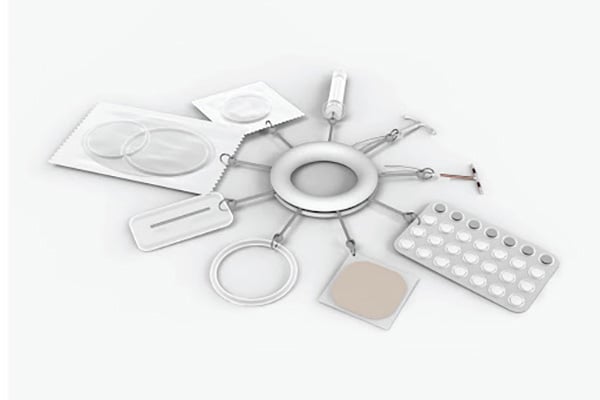Co-designing adolescent sexual health care with young people and providers

Barriers to reproductive health care for adolescents include many factors that adults may not consider. Concerns about cost and confidentiality, lack of transportation, not knowing where clinics are located, and even fear about their safety when travelling to an appointment can prevent young people from seeking needed reproductive health care.
These barriers contribute to individual-level consequences. Compared to national rates, the birth rate for adolescents on the west and south sides of Chicago is three times higher, the gonorrhea rate is seven times higher, and the chlamydia rate is four times higher. While these health disparities reflect many complex structural factors, the limited number of easy-to-access, high-quality, youth-centered sexual and reproductive health care facilities contributes to the problem.
These disparities and a belief in the abilities of young people motivate the Center for Interdisciplinary Inquiry and Innovation in Sexual and Reproductive Health (Ci3). Ci3 is a research center addressing the social and structural determinants of adolescent sexual and reproductive health, led by Melissa Gilliam, MD, MPH. Its Design Thinking Lab uses design research to reimagine how young people living on the South and West Sides of Chicago might access sexual and reproductive health care.
If pictures are worth a thousand words, then this tangible birth control tool must be worth 10,000.
Ci3’s Design Thinking Lab uses a process called human-centered design, an approach that focuses on the end-user(s) throughout the design process. Using this approach, Ci3’s interdisciplinary team of designers, researchers, clinicians, and public health professionals partner with health care providers and youth on Chicago’s South and West Sides to co-design new tools, services, and systems for adolescent sexual and reproductive health care.
Mobilizing Access to Adolescent Sexual Reproductive Health Care
To understand ways to extend sexual and reproductive health care to high school students, in 2015 Ci3’s Design Thinking Lab began partnering with the Icy Cade-Bell, MD, brings needed services such as immunizations, asthma care, and sports physicals to school-age children. The mobility of the medical unit ensures that these students do not miss school while providing them with high quality health care they may not otherwise receive.
At the time, the Comer Pediatric Mobile Medical Unit team believed that adolescents had additional needs and wanted to provide comprehensive sexual and reproductive health care as well. The initial research was published by Ci3 researchers in the Journal of School Health. This study describes how Ci3’s Design Thinking Lab partnered with the Comer Pediatric Mobile Medical Unit team to provide sexual and reproductive health care within the Mobile Unit. The study found that adding sexual and reproductive health care to a mobile unit was feasible and highly acceptable to adolescents.
Ci3’s Design Thinking Lab launched the next phase of the project: designing a new model of health care with young people and health care providers. The process is a dynamic one involving concept generation, prototyping, implementation, data collection, and iteration. The mobile health unit serves as a living laboratory for developing new clinical interventions. The Norwegian American Hospital Care-A-Van has now joined the project and together the two mobile health units are bringing sexual and reproductive health care to 21 schools on the south and west sides of Chicago. The long-term goal is to develop a scalable model that can expand to traditional and non-traditional settings across the state of Illinois.
Designing Youth-Centered Care
Prototyping workshops with end users (young people and adult allies) is a central practice of Ci3’s Design Thinking Lab. In the summer of 2017, the Lab hosted the 2017 Summer Design Challenge. Young people are ideal design partners since they are experts in their own experiences. Thirty-one young people participated in five, five-hour sessions hosted by the UChicago Center for Identity + Inclusion and ACCESS Center for Discovery and Learning. In these workshops, young people were trained in the design process. They reflected on past clinical experiences, applied design research methodologies, to understand how adolescent sexual and reproductive care is delivered on a mobile health unit, analyzed data, as well as made and tested prototypes.
Making Contraceptive Choices Tangible For Youth
During the 2017 Summer Design Challenge, several youth teams created prototypes that featured “tangible” birth control methods. By seeing life-sized versions of each birth control method, young people said they could better understand the range of available birth control methods. Young people’s enthusiasm motivated Ci3’s Design Thinking Lab to create a new counseling tool: the tangible birth control kit.
The next step was to understand provider’s contraceptive counseling concerns and whether the tangible birth control kit would be helpful to them. Ci3’s Design Thinking Lab interviewed health care providers from hospital clinics and mobile health units and showed them the prototype. During these interviews, health care providers described challenges with completing exams, counseling patients on birth control options, and dispelling myths around birth control methods within the time constraints of a 15-minute appointment. In their current practice, they liked using patient handouts with images and basic facts that help young people understand each birth control method. Health care providers were excited for the introduction of the tangible birth control kit because it would help them show the actual size of specific methods and how they feel. One health care provider said, “If pictures are worth a thousand words, then this [tangible birth control tool] must be worth 10,000.”


With this encouragement, the Lab developed a more refined version of the tool. The next step was to give the prototype a trial run with young people. Ci3’s Design Thinking Lab partnered with two midwives from

Center for Interdisciplinary Inquiry and Innovation (Ci3) in Sexual and Reproductive Health
Established in 2012, Ci3 is a University of Chicago research center that addresses the social and structural determinants of adolescent sexual and reproductive health with innovative labs that create games, digital narratives, and design interventions with and for youth.
Learn more about Ci3

